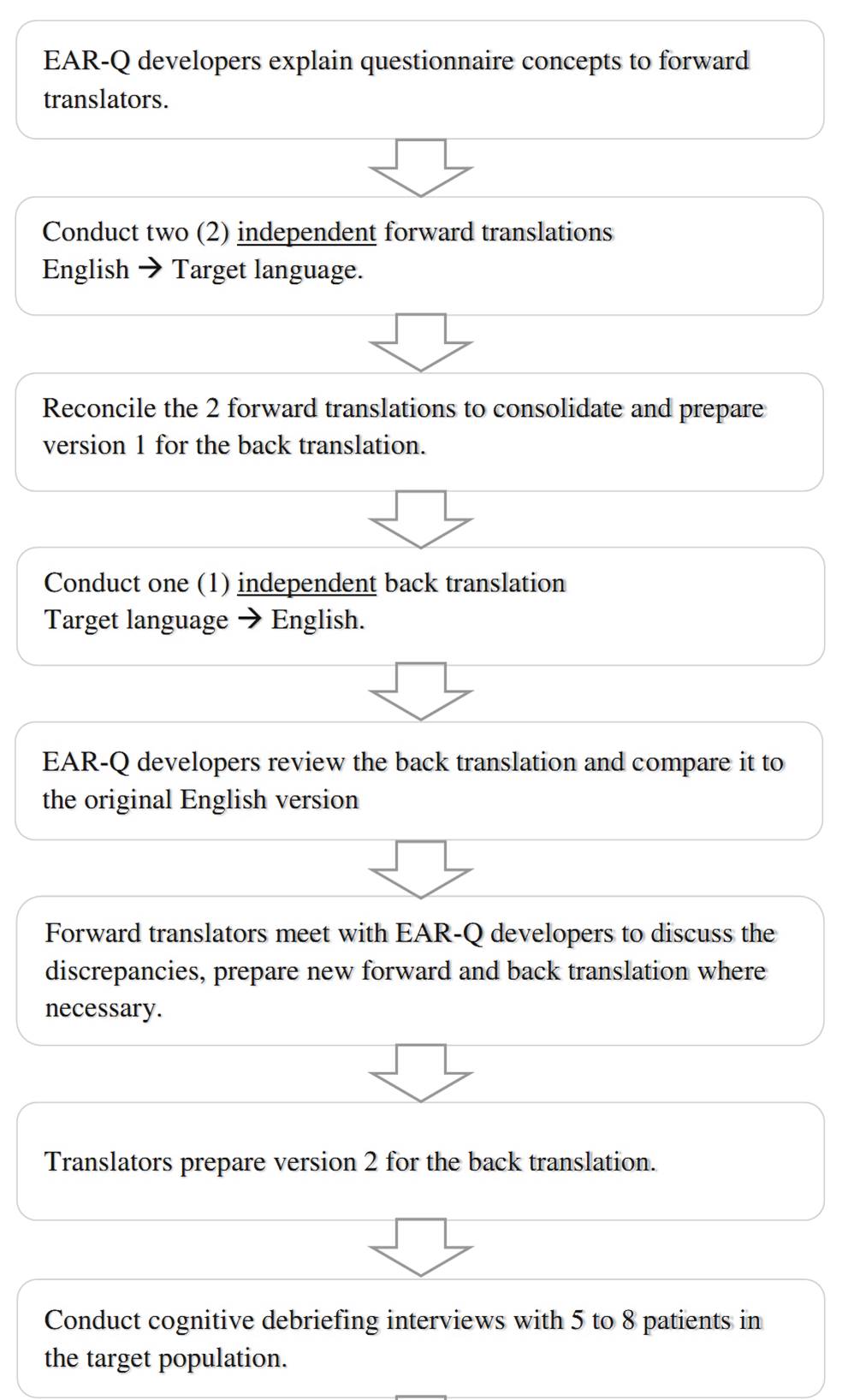Background Our teamdeveloped a new patient-reported outcomemeasure to evaluate outcomes in patients having surgery for an
acquired or congenital external ear anomaly. The aim of this study was to translate and culturally adapt the EAR-Q into Arabic,
Chinese, French, and Spanish (Spain).
Methods Translation and cultural adaptation guidelines set forth by the International Society for Pharmacoeconomics and
Outcomes Research (ISPOR) were followed.
Results The EAR-Q consists of 30 items in 2 scales measuring the look and feel of one’s ears in addition to 2 stand-alone items
about scars and 1 item about hearing aids. Forward translations revealed no items, instructions, or response options that were
difficult to translate into any of the languages. After back translation, the meaning of 6 (18%) items from the Arabic and Spanish
translations, and 4 (12%) items from the Chinese and French translations, respectively, differed from the English version and
required revision. Final translations were shown to 28 patients with an ear condition who took part in cognitive debriefing
interviews. Participants were recruited from plastic surgery centers in Qatar, China, Spain, and an Ear Nose and Throat center in
France. Mean age for participants was 10 years (5 to 18), 15 were male, and 50% had prominent ears (n =14).Participants
reported few difficulties with understanding the scales.
Conclusions Translation and cultural adaptation of the EAR-Q resulted in 4 translations that maintained semantic, idiomatic,
experiential, and conceptual equivalence to the original English version.
Level of evidence: Level III, risk/prognostic study.

